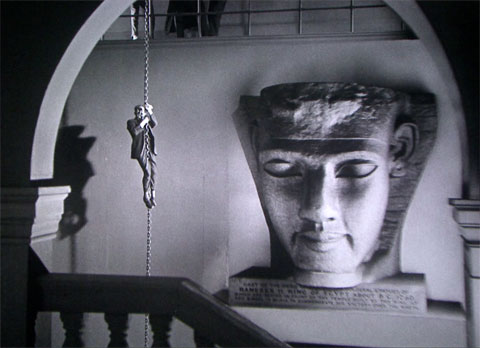BLACKMAIL (1929) by Alfred Hitchcock
music by Edison Studio
live electronics: Mauro Cardi, Luigi Ceccarelli, Fabio Cifariello Ciardi, Alessandro Cipriani
Ivo Nilsson – trombone
Daniele Roccato – contrabbasso
BLACKMAIL (UK 1929) 72 min
directed by Alfred Hitchcock
screenplay Benn W. Levy, Alfred Hitchcock, Michael Powell
actors: Anny Ondra (Alice White), John Longden (detective Frank Webber), Donald Calthrop (Tracy), Cyril Richard (the artist)
![]() with the support of SIAE for the project “SIAE – classici di oggi”
with the support of SIAE for the project “SIAE – classici di oggi”
video Marco Rovetto
performance of Blackmail
Nov 3, 2013, Aberdeen (UK) – The Belmont Picture House – Arts cinema, Scotland’s Festival of New Music
June 7, 2016 – Ravenna, Ravenna Festival, Palazzo dei Congressi
November 13, 2016 – Roma, Romaeuropa Festival, Macro Testaccio la Pelanda
partial version of Blackmail
April 7, 2013 – L’Aquila, Season of the Società dei Concerti “Barattelli”, ridotto del Teatro Comunale
Dec 22, 2014, Perugia (Italy) – Cinema Postmodernissimo
presentation of the “Blackmail” project
After creating new soundtracks for “The Last Days of Pompeii”, “The Cabinet of Dr. Caligari” and “Inferno” the four composers of Edison Studio with Ivo Nilsson (trombone) and Daniele Roccato (double bass) present the score for Alfred Hitchcock’s 1929 film “Blackmail”.
Alfred Hitchcock made two versions of “Blackmail” so it has the exceptional credentials of being both his last silent movie and the first all-British “talkie” to be provided with a complete soundtrack. Filled with tension and a growing sense of anxiety that affects all of the protagonists, the film shows that at 29 years of age Hitchcock was already a fully mature director.
For the first time in his oeuvre at the centre of the story there is an innocent man who is wrongly suspected, but there is also the inner drama of a guilty woman and her boyfriend who, from his role as a detective and investigator, becomes an accessory to her crime, due to his love for her. Some scenes anticipate themes that would become particularly dear to Hitchcock, such as the final and climactic chase in a monumental building. The film is also celebrated for its numerous technical innovations, such as the Schüfftan process, used for the scenes in the British Museum, or the lip-synching of Anny Ondra directly on the set. Enthusiastically received by audiences and critics at the London premiere of November 25th 1929, “Blackmail” confirmed Hitchcock in his position as the most important English filmmaker of his time.



The plot
After a prologue showing a police operation by detective Frank Webber and his colleagues of Scotland Yard, the scene shifts to a tea room where Frank is taking his girlfriend, Alice White. But they soon quarrel and he leaves. Shortly after this she meets a painter friend of hers who takes her to his studio-flat. The artist tries to seduce her. She resists his unwelcome advances and when he attempts to rape her she stabs him to death with a knife. After trying to remove any evidence of her presence from the scene of the murder, Alice wanders confused and disoriented through the streets of London until dawn. Frank is one of the agents assigned to investigate the mysterious murder. He recognizes the murdered man, whom he had seen leaving the tea house with Alice and he also finds one of her gloves at the painter’s studio. He starts to understand what has happened but does not reveal his suspicions to his colleagues or superiors. But this is only the start of Frank’s doubts and moral dilemmas, as another man knows that Alice was at the scene of the crime that night and he attempts to blackmail the couple in exchange for keeping quiet about his suspicions…


The soundtrack by Edison Studio
The composition of the soundtrack was preceded by a long phase of segmentation, analysis and interpretation of the film and its portrayal of the characters. The sound environments were established, as well as the expressive atmospheres, the kind of support to be used for the tracks and finally the kind of sound materials that would be used. The timbric palette of the score includes instrumental and vocal samples, concrete and synthesized sounds, pre-existing musical fragments, and finally, brief quotations from subsequent Hitchcock soundtracks, inserted as significant sound icons with a particular resonance.
The score played by the four composers of Edison Studio has all the immediacy and excitement of a live musical performance, in the best traditions of the silent film. The instrumentation includes a computer, MIDI keyboards and samplers, acoustic instruments (also with two miniature violins), as well as percussion and various resonant objects. All of the sophisticated technology that is available to us today is combined and overlapped to create the soundtrack for a movie that was also very technologically advanced and experimental for its time.



